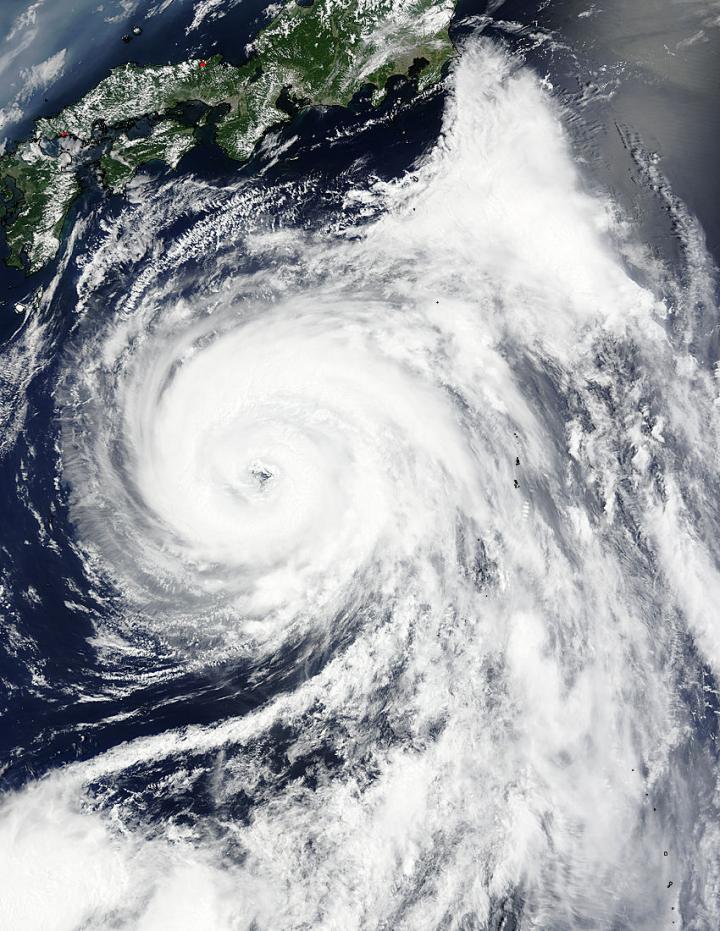

NASA's Terra satellite captured this visible image of Typhoon Nangka nearing Japan on July 15 at 01:25 UTC (July 14 at 9:25 p.m. EDT).
Credits: NASA Goddard MODIS Rapid Response Team
The Moderate Resolution Imaging Spectroradiometer or MODIS instrument aboard NASA's Terra satellite captured a visible image of Typhoon Nangka nearing Japan on July 15 at 01:25 UTC (July 14 at 9:25 p.m. EDT).
The image showed a ragged 15-nautical-mile-wide eye surrounded by thick bands of powerful thunderstorms.
At 1500 UTC (11 a.m. EDT), Nangka's maximum sustained winds were near 80 knots (92.0 mph/148.2 kph).
It was centered near 29.3 North and 135.4 East about 375 nautical miles (431.5 miles/694 km) south-southeast of Iwakuni, Japan. Nangka has tracked north-northwestward at 13 knots (15 mph/24 kph).
For warnings and watches from the Japan Meteorological Agency, visit: http://www.
The Joint Typhoon Warning Center forecast calls for Nangka to weaken and track north-northwestward to northwestward toward Japan.












